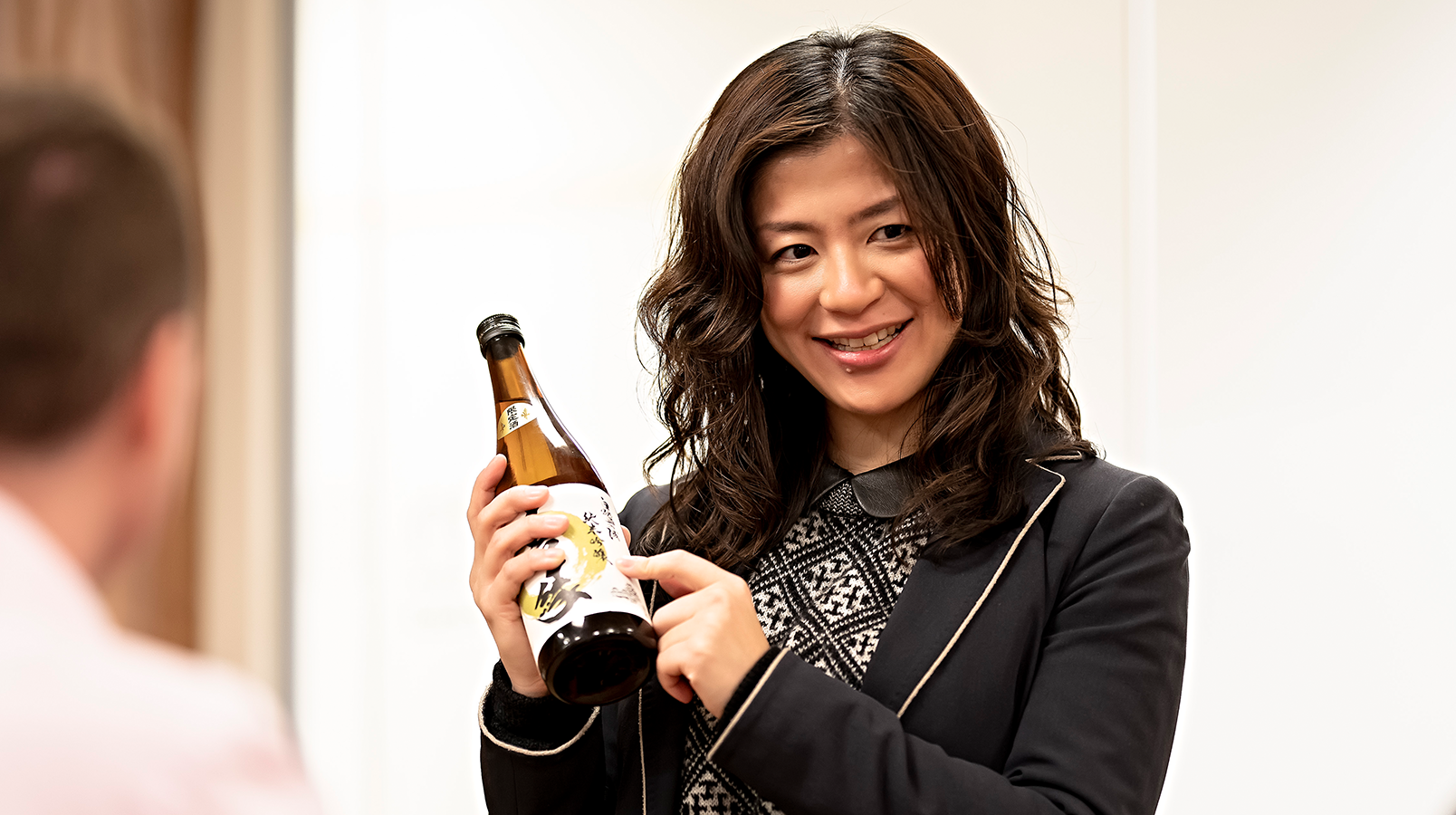Sake is such a fascinating and delicious drink, with plenty of styles to explore. But it is still a category that’s not widely understood. We asked Natsuki Kikuya, Sake Product Development Manager at WSET, for some advice to help you get started in the world of sake.
Interested in learning more about sake? Check out the recording from our recent WSET Bitesize: What is sake? webinar on YouTube.
Before we get begin, let's answer the most basic question:
What is sake?
Sake is a Japanese alcoholic beverage that is made from rice. Most sakes are clear and colourless in appearance but some are a pale yellow. They are typically 15–17% abv, slightly sweet and lightly acidic. They have light and delicate cereal, lactic or fruity flavours. All sakes are made using four main ingredients: steamed white rice; kōji; water and yeast.
Basic sake label terms
Sake labels can be intimidating for non-Japanese speakers. Here are some key label terms to look out for on sake bottles.
The polishing ratio / seimai-buai
All rice used for sake making is 'polished'. Polishing involves mechanically removing the outer layer, slowly, because it would give the sake unwelcome flavours and textures. The 'polishing ratio' is the percentage of white rice remaining in the centre of the rice grain after polishing. The remaining percentage has a significant impact on the style of sake.
Want to discover more about sake terminology? The WSET Level 1 Award in Sake offers a fantastic introduction to this fascinating beverage.
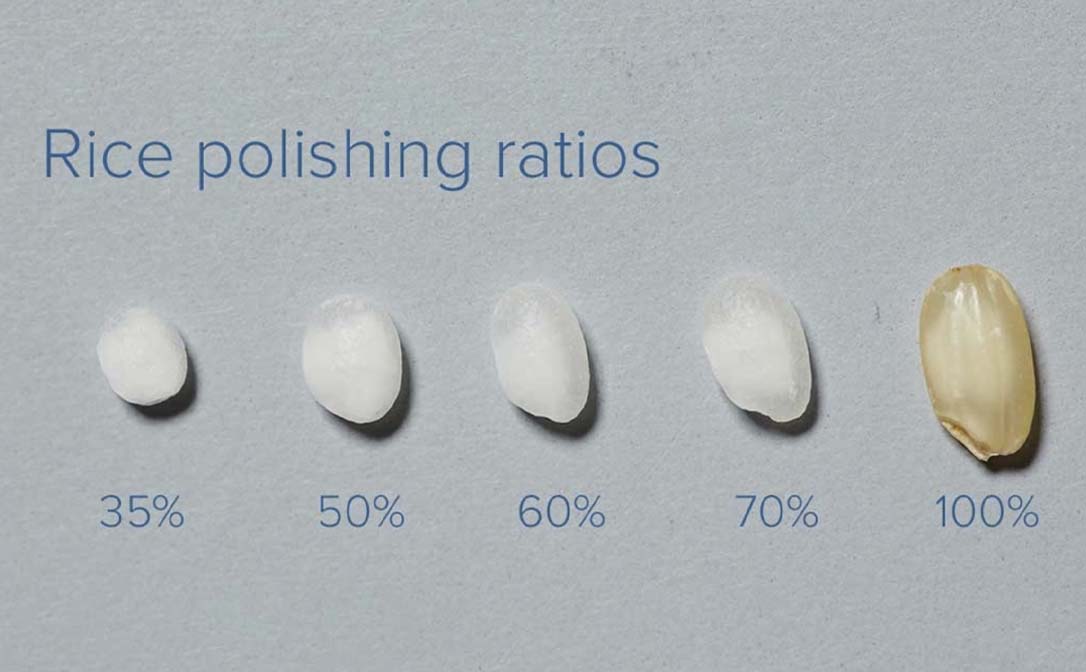 The polishing ratio is the percentage of white rice remaining in the centre of the rice grain after polishing.
The polishing ratio is the percentage of white rice remaining in the centre of the rice grain after polishing.
Ginjō sake
Ginjō refers to one of the two main styles of premium sake. Ginjō sakes are required to have a polishing ratio of 60% or less. Daiginjō (dai refers to ‘big’) has to have below 50%. Ginjō sakes typically have pure, floral and fruity aromas such as melon, apple, pear, rose and aniseed.
Junmai
Junmai refers to another style of premium sake, which is made from rice that includes more of the rice grain. Junmai doesn’t have a maximum polishing ratio but it is typically around 70%. The resulting sake will have more complexity and umami flavours, with cereal and lactic aromas.
Kimoto
Acidity plays a crucial role in protecting the sake from spoilage during the start of alcohol fermentation. Compared to wine fermentation where acidity comes from the grape itself, sake rice doesn’t contain enough acidity. Kimoto is a traditional method of starting a sake fermentation that uses natural lactic acid bacteria in the air to create the acid that protects the yeast.
This method also produces extra layers of flavours and a lactic creamy mouthfeel. Even though sake made by this method accounts for less than 10% of all sake produced, many sake fans really enjoy these structured, rich sakes with deep flavours and great acidity.
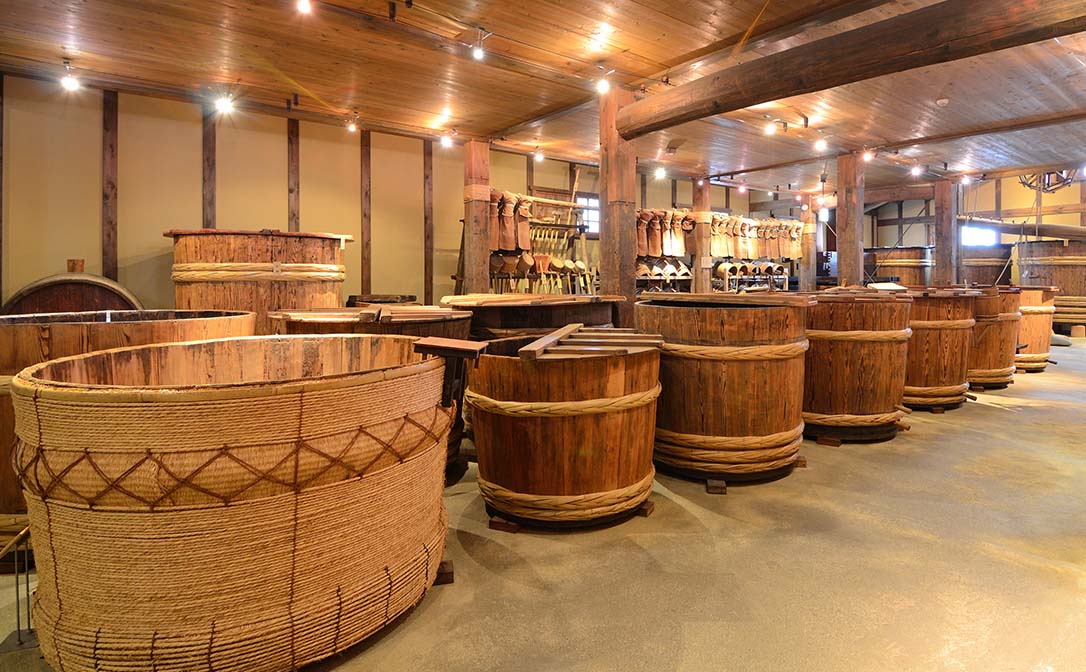 A traditional Japanese sake brewery
A traditional Japanese sake brewery
Serving sake: sake-ware options
O-choko
Traditionally, sake was served warm in o-choko, small cups made usually in ceramic or earthenware. Today, you can find o-choko in various shapes, sizes and materials to enhance your drinking experience. These cups are ideal for junmai styles served at ambient temperatures or gently warmed, up to 40-50 °C / 100-120 °F.
Stem glasses
Not all sake is best served at room temperature or warmed up. The fragrant and pure ginjō style works beautifully chilled in a classic tulip-shaped wine glass because the shape of the glass helps to enhance the delicate fruity aromas of the style.
Tokkuri
Sake is normally served in a traditional sake carafe, tokkuri. It’s the ideal vessel to warm up sake as its unique narrow top shape prevents sake from evaporating its aroma and alcohol while warming in a hot water bath.
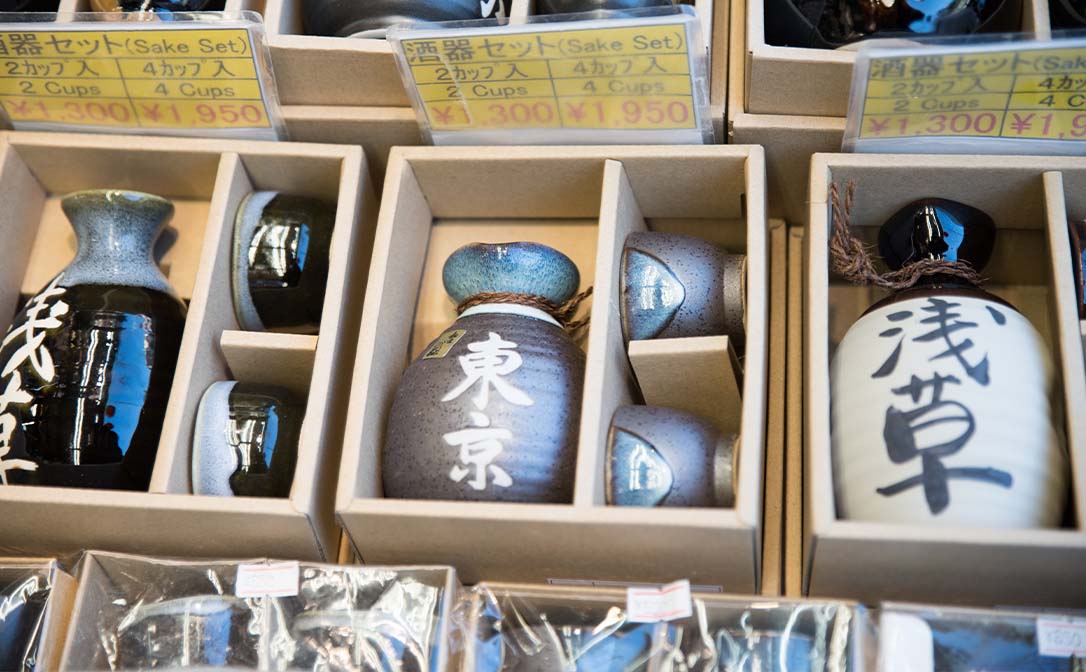 Tokkuri carafes and o-choko cups
Tokkuri carafes and o-choko cups
For chilled sake, katakuchi, carafes with a wider brim are used to express and open up the aromas.
Fun fact: in Japan, it’s traditional to top up others’ sake cups before your own.
Sake and food pairing suggestions
The Japanese say “sake wa ryori o erabanai” which translates as “sake never fights with food” or “sake never chooses food.” Although you may be tempted into thinking that sake only goes with Japanese cuisine, this is not the case. Here are some pairing suggestions to enjoy sake with non-typical Japanese food!
Sake and seafood
Sake contains lots of umami, which are types of amino acids that express savoury and delicious flavours. Although various drinks work nicely with seafood, sake not only cleanses your palate but also neutralises the fishy flavours and enhances the umami flavours of the seafood.
The creamy textures of junmai harmonise well with fresh oysters. Pure yet rich ginjō style sake works brilliantly with meaty scallops or lobsters that are simply steamed or grilled. Caviar is often considered difficult to pair with wines but daiginjō contains similar molecules to the fish roe and works perfectly.
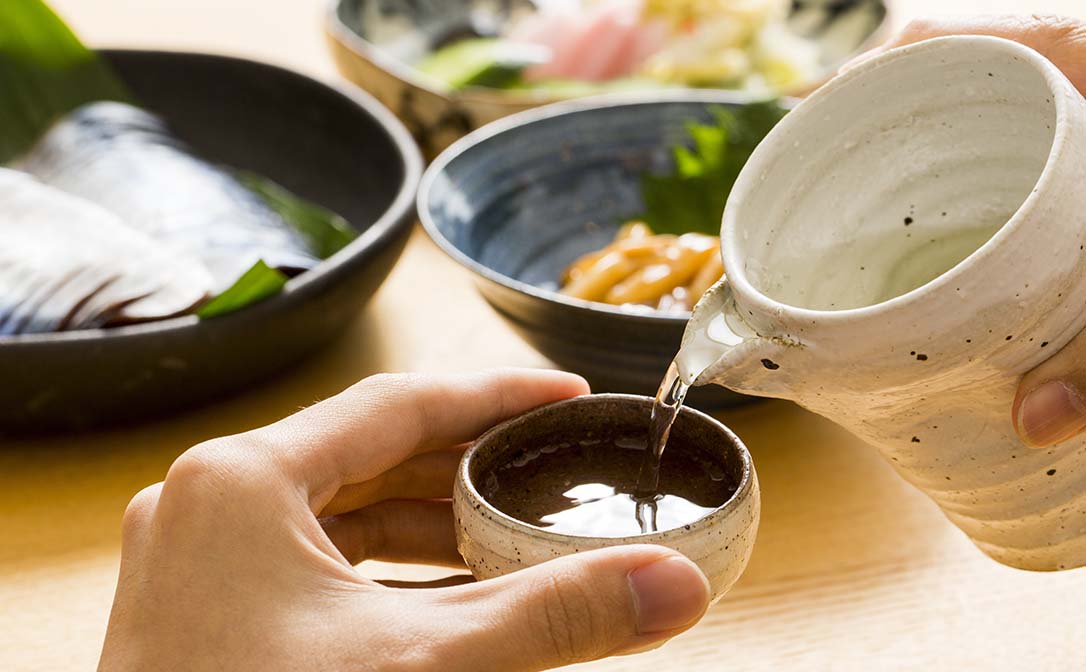
Sake and cheese
As mentioned above, one of the main acids in sake is lactic acid, and sake naturally works great with dairy products including a wide range of cheeses.
There are limitless possibilities in combinations but here are some of my favourites:
- Aromatic and fruity daiginjō sake with blue or fresh goat cheese
- Rounded and soft junmai sake with Gouda or Manchego cheese
- Umami rich kimoto or yamahai style with Comté or Emmental cheese
With thanks to Natsuki Kikuya, Sake Product Development Manager at WSET. If you're keen to learn more, the WSET Level 1 Award in Sake offers you a unique hands-on introduction into the world of sake. You’ll explore the main styles and types of sake through sight, smell and taste to develop an understanding of the key factors affecting flavours and aromas. Learn more here.
Related content:
- WSET Level 1 Award in Sake
- Busting sake industry jargon
- Meet our educators: Melissa Mills on discovering sake, food pairing and changing careers


